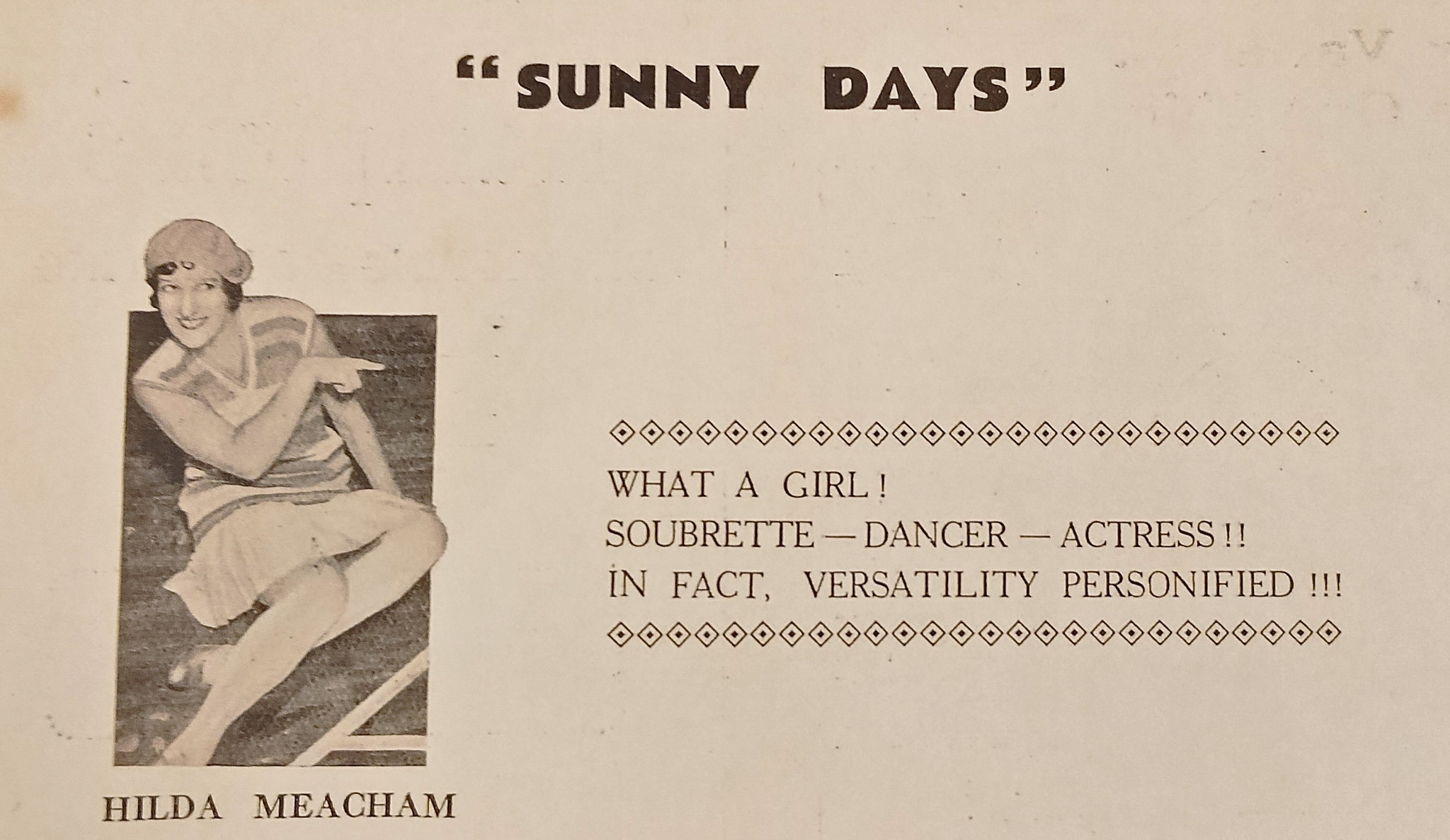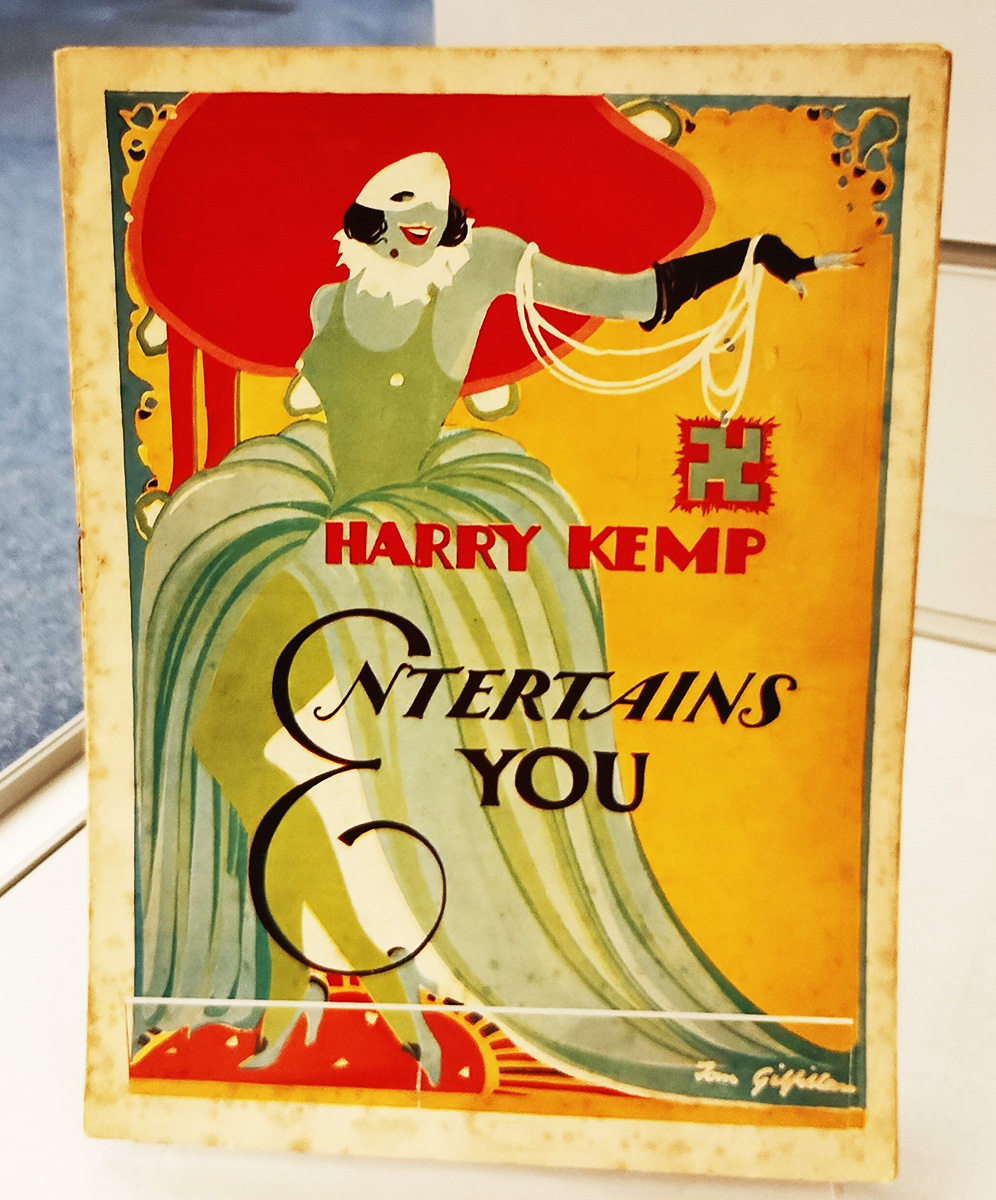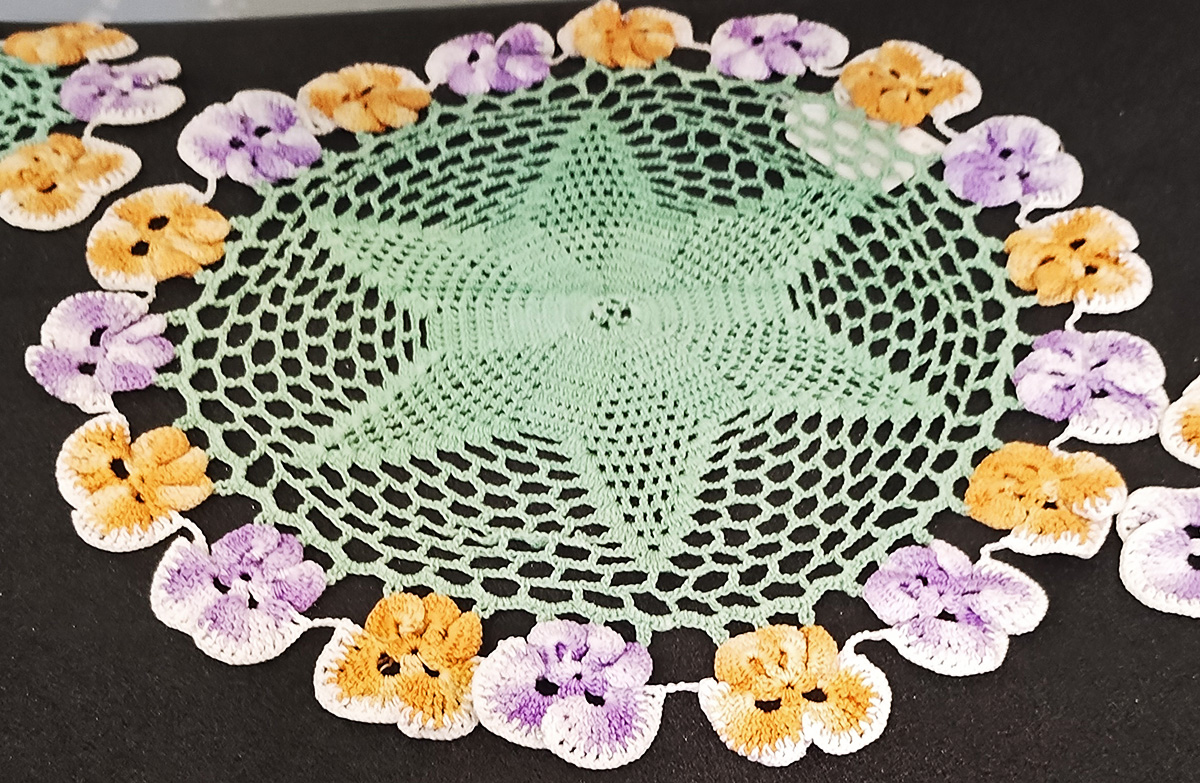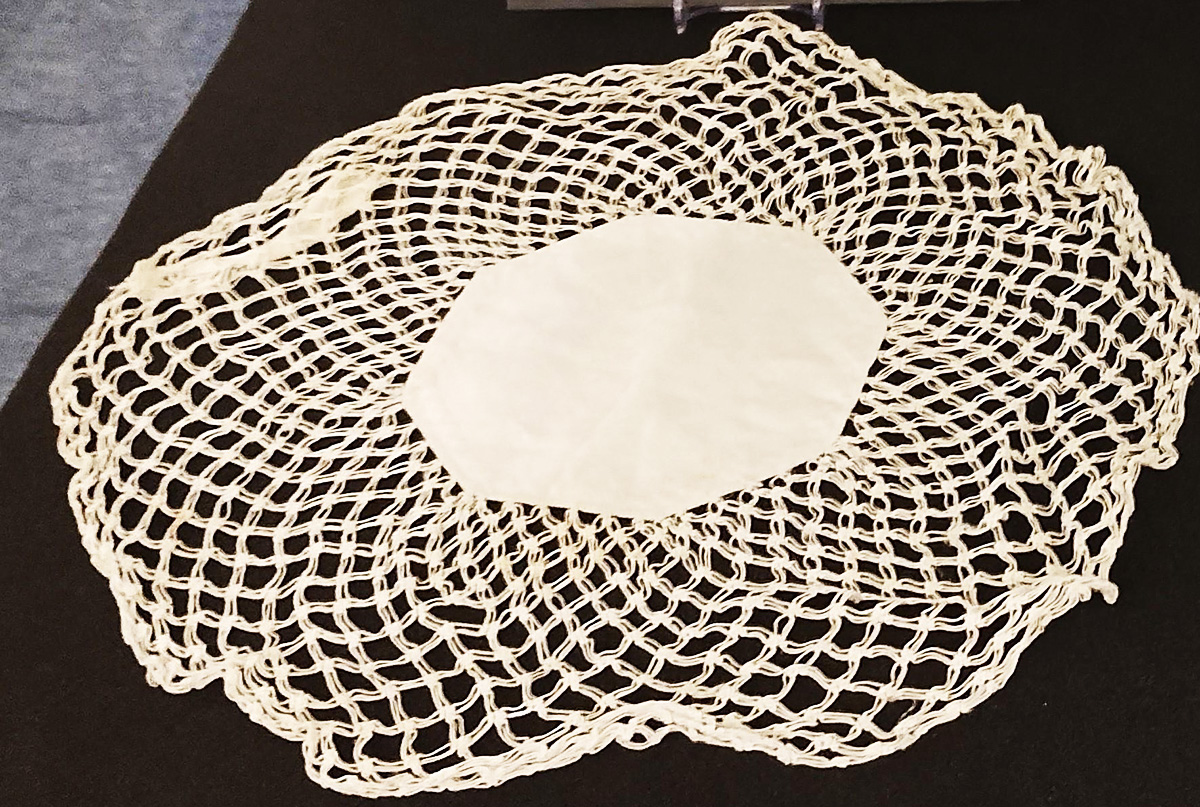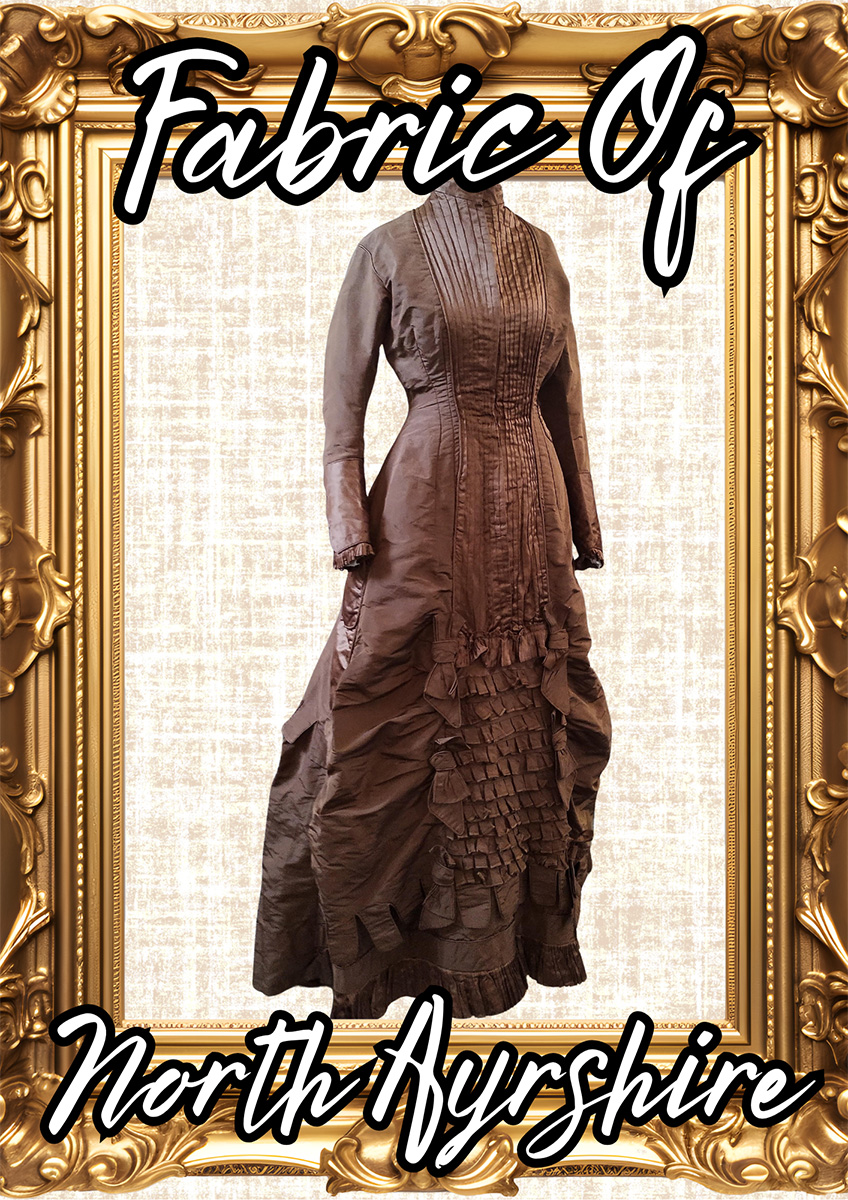We have a new exhibition waiting for you at the Heritage Centre, running until 17th December.
Every textile tells a story, and we’re delighted to bring some of these stories to you using costume and textiles from our collection. The Fabric of North Ayrshire was inspired by the work carried out by two Glasgow University Museum Studies students, Julia and Grace, who spent their course placement with us.
On display we have lovely examples of Ayrshire Whitework. See uniforms worn by Captain Bercham, who was part of the story of the ghost ship Baychimo.
From entertainers’ costumes to crochet, banners to tapestry, there’s something for every textile or local history enthusiast, or those who just appreciate lovely things!
To quote Grace: ” the thrill of opening a box that had possibly not been opened in years, with no idea of what we would find, is unmatched.”
We all caught the bug, and this exhibition has been inspired by Julia and Grace’s work.
Julia particularly enjoyed looking at our crocheted objects, as a keen crocheter herself.
“As a crocheter myself, my favourite items to come across were the crocheted pieces. Seeing the detailed handiwork of crocheters of the past made me feel connected to the craft in a new way. I felt inspired to look into the history of crochet and some of the techniques used in the pieces in the collection.”
In contrast to other needlecrafts, crochet is quite modern, with the first published pattern appearing in 1822. Despite its modern advent, the origins of crochet are foggy. Several textile and fibre crafts predating crochet utilise similar techniques, leading scholars to believe that crochet evolved from these crafts. Shepherd’s knitting and Tambour embroidery are both precursors to crochet which use hooked tools to create textile works using stitches similar to modern crochet. Although it is difficult to trace where and how crochet was first invented, crochet was likely first popularised as a stand in for lace. Crochet is less time and labour intensive than other types of traditional lace making.
You can read the whole of Julia’s blog post about her work with the North Ayrshire collection HERE.
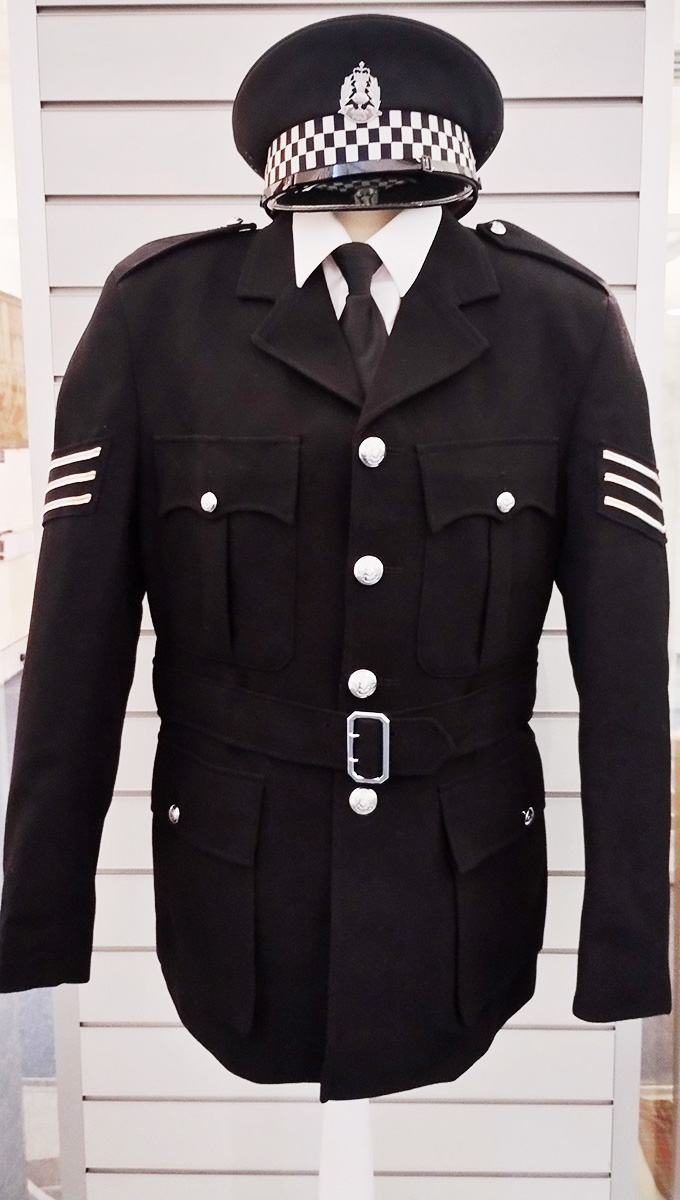
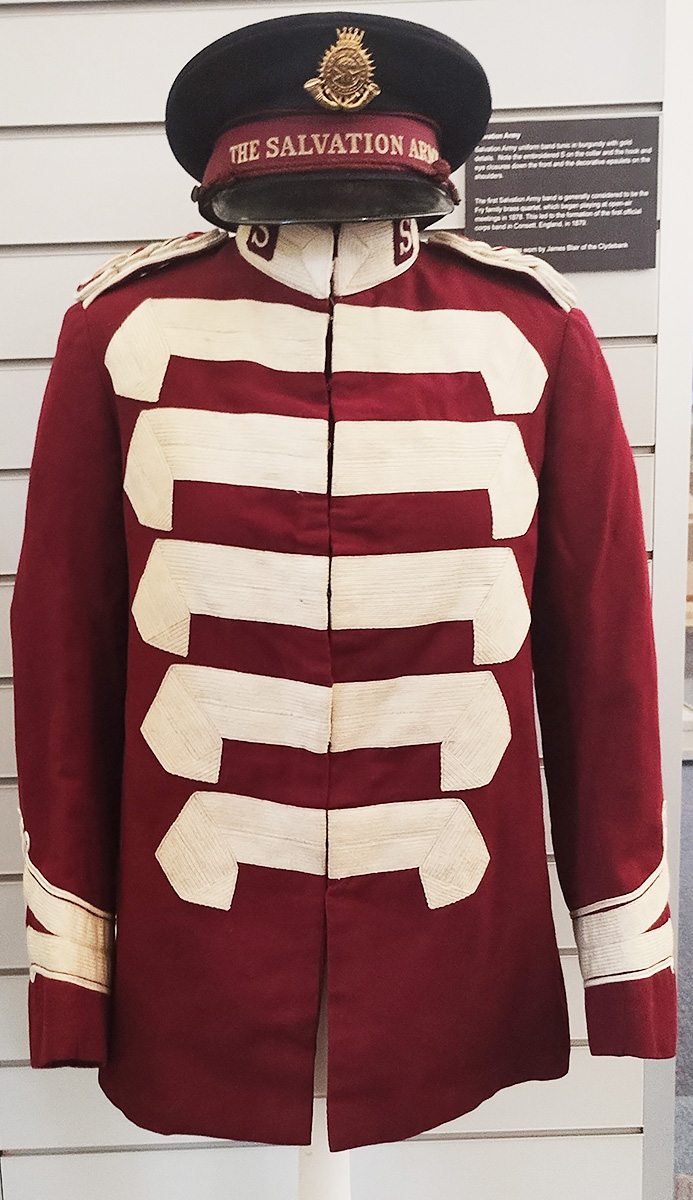
Salvation Army uniform band tunic n burgundy with gold details with embroidered S on the collar and the hook and eye closures down the front and the decorative epaulettes on the shoulders.
This uniform was worn by James Blair of the Clydebank Salvation Army Band.
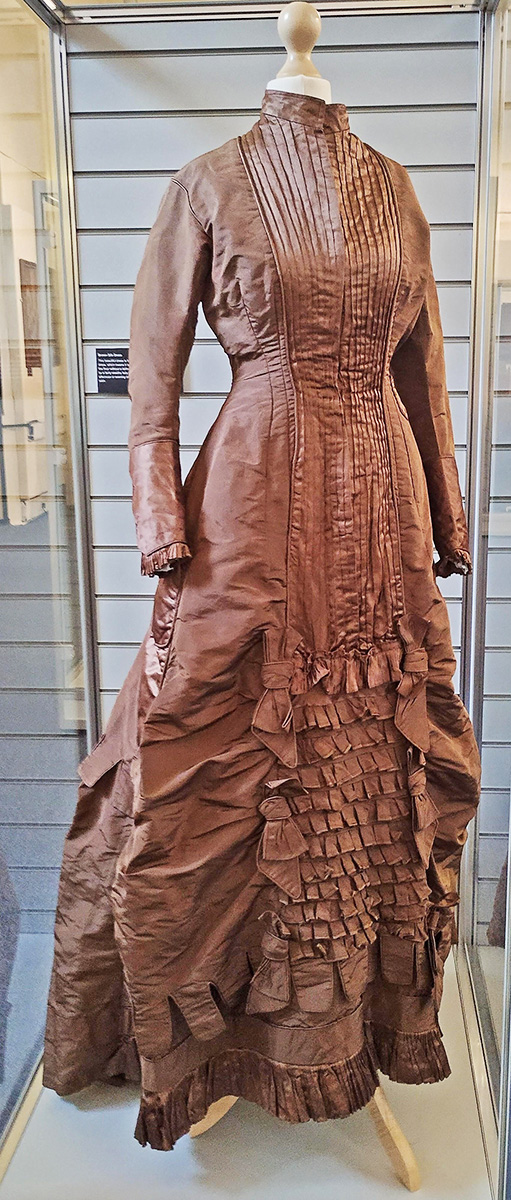
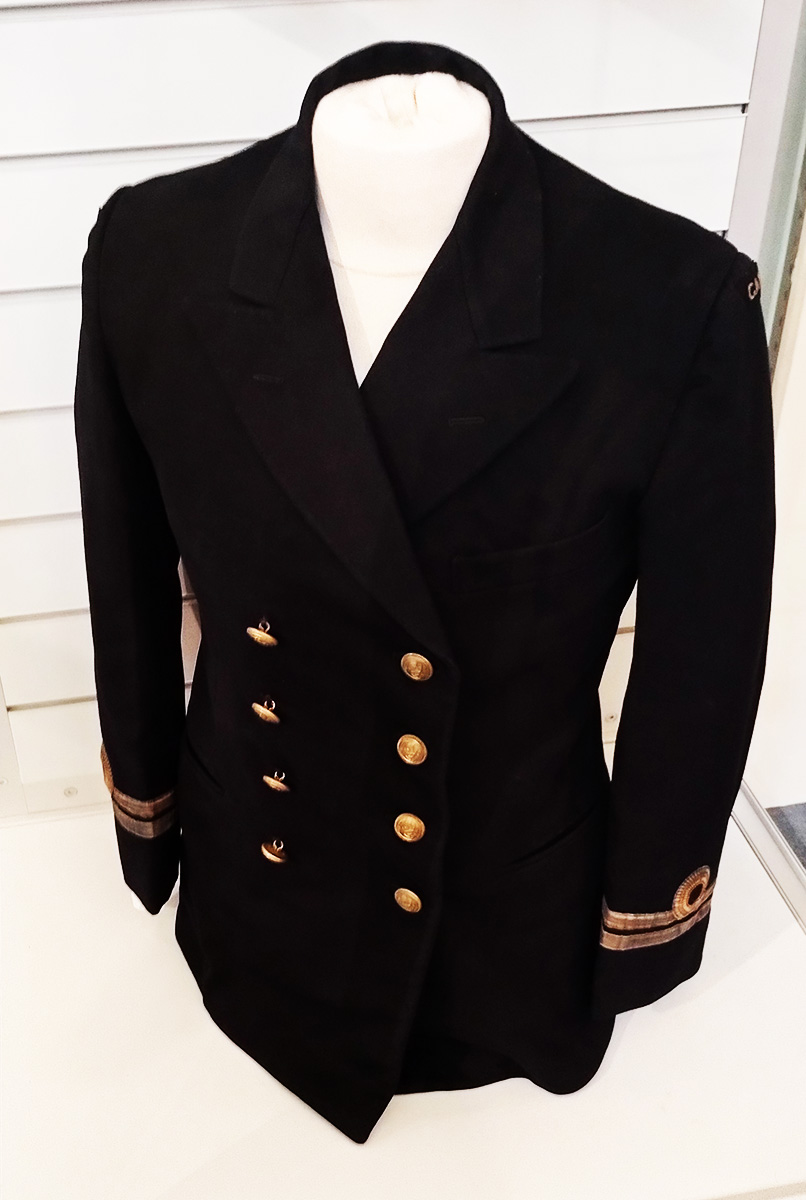
Here is a selection of items that belonged to Captain Frederick William Berchem who was chief officer of the Hudson Bay Company ship Bayskimo when she was crushed in the ice and sank in Ungava Bay, Canada, in 1925.
Frederick Berchem was a Councillor with Saltcoats Town Hall from 1968 to 1975 and died on 30th July 1995, in his 94th year.
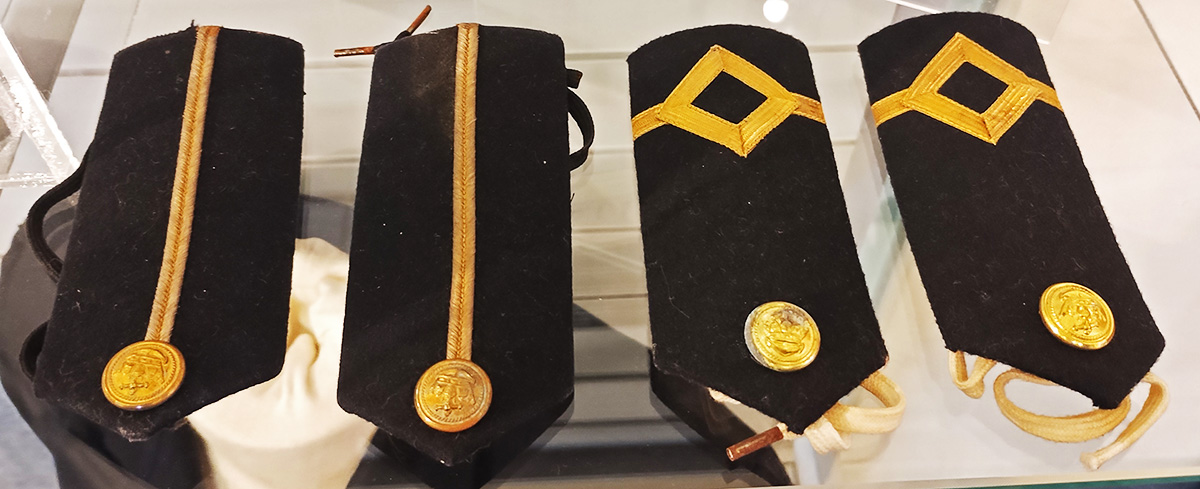

The trews, or tartan trousers, are part of a collection of costume from Harry Kemp Entertainment troupes.
Harry Kemp's name was synonymous with entertainment in Clyde resorts from Dunoon to Troon from the 1920s. Kemp had a few entertainment troupes who performed in Largs and Saltcoats, including the Scotch Broth Entertainers, Regal Revels ad Sunny Days.

There is a name written in the waist band of these trousers. The name is Hilda M who was one of the members of the Sunny Days entertainers that performed summer sessions in Largs.
From the 1933 summer programme, we have found that Hilda M was Hilda Meacham, an actress and dancer, who at this time was performing as part of the summer show at the Barrfields Pavilion in Largs.
